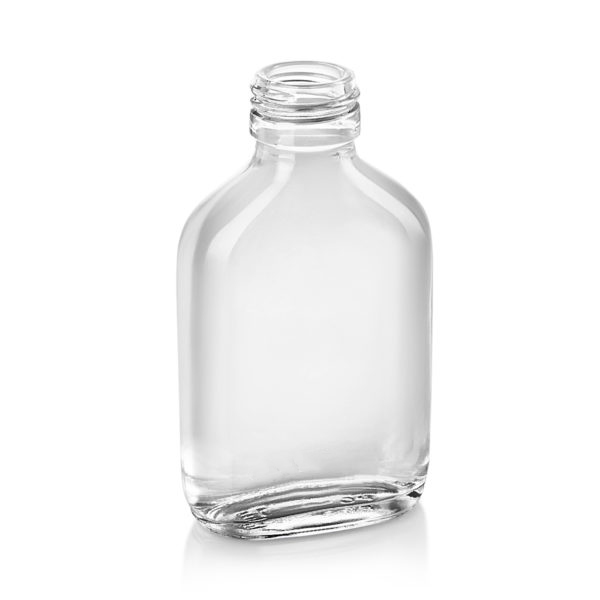summary
From the raw material processing, batch preparation, melting, clarification, homogenization, cooling, forming and cutting process, the destruction of the process system or the error of the operation process will show various defects in the original plate of flat glass.
The defects of flat glass greatly reduce the quality of glass, and even seriously affect the further forming and processing of glass, or cause a large number of waste products. There are many kinds of defects in flat glass and their causes. According to the defects existing in the inside and outside of the glass, it can be divided into internal defects and appearance defects. The internal defects of glass mainly exist in the glass body. According to their different states, they can be divided into three categories: bubbles (gas inclusions), stones (solid inclusions), stripes and nodules (glass inclusions). Appearance defects are mainly produced in the process of forming, annealing and cutting, including optical deformation (tin spot), scratch (abrasion), end face defects (edge burst, concave convex, missing angle), etc.
Different kinds of defects, the research method is also different, when there is a certain defect in the glass, often need to pass
Only through the joint study of several methods can we make a correct judgment. On the basis of finding out the causes, timely measures should be taken
Effective process measures to prevent defects continue to occur.
Bubble
Bubbles in glass are visible gas inclusions, which not only affect the appearance quality of glass products, but also affect the transparency and mechanical strength of glass. Therefore, it is a kind of vitreous defect which is easy to attract people’s attention.
The size of the bubble ranges from a few tenths of a millimeter to a few millimeters. According to the size. Bubbles can be divided into grey bubbles (diameter SM) and gas (diameter > 0.8m), and their shapes are various, including spherical, graphical and linear. The deformation of bubbles is mainly caused by the product forming process. The chemical composition of bubbles is different, and they often contain 2, N2, Co, CO2, SO2, hydrogen oxide and water gas.
According to the different causes of bubbles, it can be divided into primary bubbles (batch residual bubbles), secondary bubbles, external air bubbles, refractory bubbles and bubbles caused by metal iron and so on. In the production process, there are many reasons for bubbles in glass products, and the situation is very complex. Usually, in the different stages of the melting process, the first step is to judge when and where the bubbles are generated, and then to study the raw materials, melting and forming conditions, so as to determine the causes of their formation, and take corresponding measures to solve them.
Analysis and stone (solid inclusion)
Stone is a crystalline solid inclusion in the glass body. It is the most dangerous defect in the glass body, which greatly affects the quality of the glass. It not only damages the appearance and optical homogeneity of the glass products, but also reduces the use value of the products. It is the main factor that causes the cracking and damage of the glass. The difference between the expansion coefficient of the stone and the glass around it is significant, so is the local stress, which greatly reduces the mechanical strength and thermal stability of the product, and even causes the product to break itself. Especially when the coefficient of thermal expansion of the stone is less than that of the surrounding glass, the tensile stress is formed on the interface of the glass, and radial cracks often appear. In glass products, stones are usually not allowed to exist, so we should try our best to eliminate them. The size of the stones is not small, some are needle like fine spots, and some can be as big as eggs or even pieces. Some of them can be detected by naked eye or magnifying glass, and some can be clearly identified by optical microscope or even electron microscope. Because the stones are always in contact with the liquid glass, they are often accompanied by nodules, lines or ripples.
Striation and nodal pain (glassy inclusion)
The heterogeneous glass inclusions in the glass body are called glassy inclusions (stripes and knots). They are common defects in glass inhomogeneity. They are different from the glass body in chemical composition and physical properties (refractive index, density, viscosity, surface tension, thermal expansion, mechanical strength and sometimes color).
Because the striation and nodule protrude in different degrees on the vitreous body, the interface between the striation and nodule and the glass is irregular, showing mutual penetration due to flow or physicochemical dissolution. It is distributed inside the glass or on the surface of the glass. Most of them are striated, some are linear or fibrous, sometimes protruding like a piece of kelp. Some fine stripes are invisible to the naked eye and can only be found by instrument inspection. However, this is not allowed in optical glass. For general glass products, a certain degree of non-uniformity can be allowed without affecting their performance. Nodule is a kind of heterogeneous glass with drop shape and original shape. In the products, it appears in the form of granule, block or piece. Stripes and arthralgia can be colorless, green or brown due to their different causes.
Post time: May-31-2021

